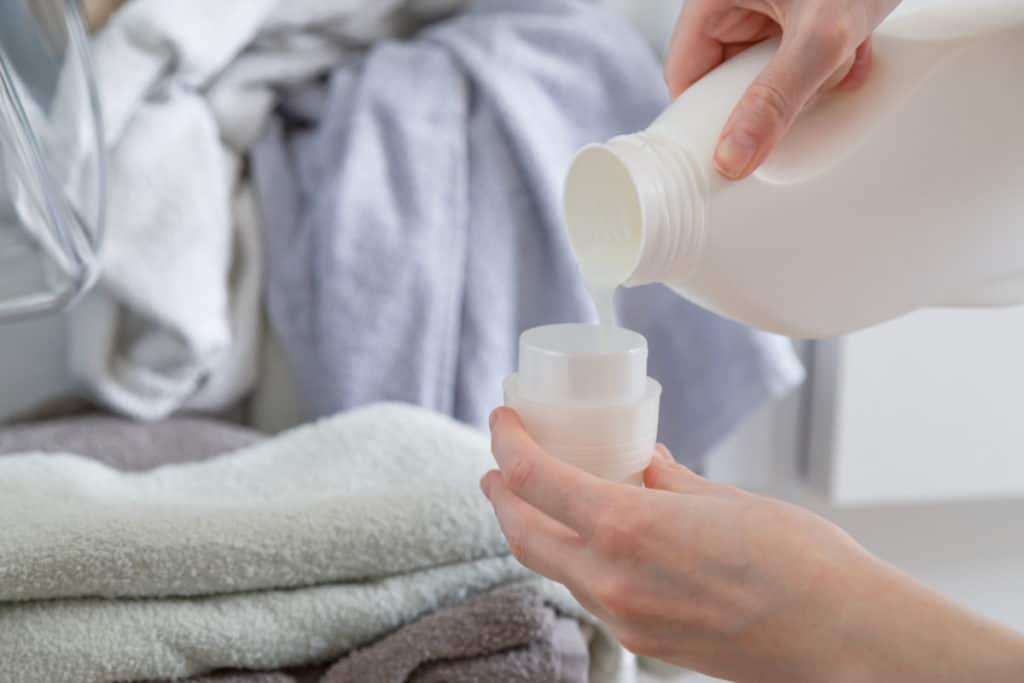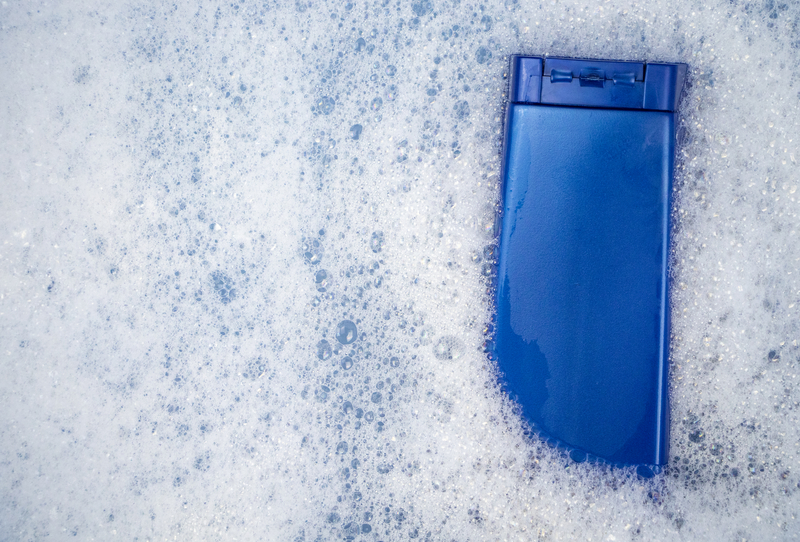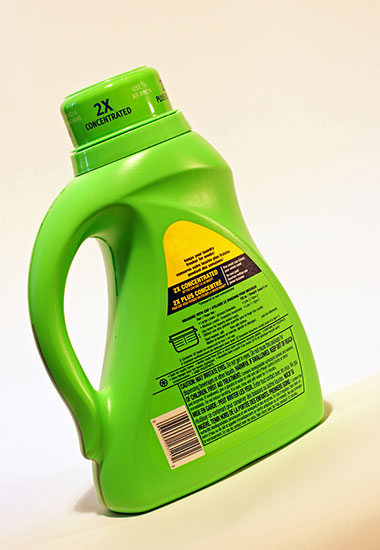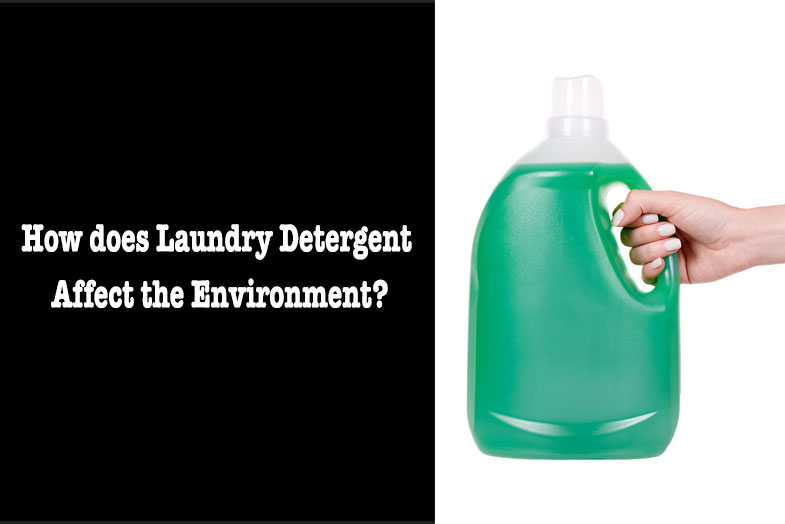While adding a capful of detergent in the washer before every wash, we never think about what it contains and what it can cause to our planet. Our only concern is to get fresh and clean clothes. Who cares about the environment?
It’s high time we have considered the consequences of detergents and soaps that we use to clean our clothes.
Laundry detergent is bad for our environment and ultimately for our planet. It has adverse effects on all types of lives, majorly harmful to aquatic life. Detergent released from home and industries along with wastewater has destructive effects on our environment.
Let us understand the chemistry of these detergents to process how they can be harmful to our surroundings.
What Are Detergents?

Chemical compounds that are both polar and non-polar are called detergents. Detergents are used for different purposes like washing utensils, cars, clothes, and much more. However, detergents made for cleaning specific items are available in the markets.
Laundry detergents are used to wash clothes. They are to be added to the washing machine just before starting the wash cycle. Detergents have become an essential part of our life. Both the powder and concentrated form of detergents are widely used around the world.
Laundry detergents contain two main ingredients – surfactant and phosphate. Laundry detergents are categorized based on these ingredients
Surfactant detergents are highly toxic. Surfactant is used in detergents to enhance several properties like emulsification, foaming, wetting, and dispersing.
On the other hand, phosphate detergents are highly caustic. Phosphate is responsible for eliminating hard water ions to soften the water. This helps the dirt particles to suspend in water.
Phosphate detergents can be really harmful, which is why they have been banned by the governments of several countries.
Read More: What Makes Laundry Detergent Eco- Friendly?
Chemical Composition of Laundry Detergent

Different brands add several ingredients in different amounts to increase the effectiveness of detergent. The common formulation used to make laundry detergent includes surfactants – 15%, bleach – 7%, builders – 70%, enzymes – 2%. These are some basic ingredients used in every type of detergent. Others are secret ingredients, which change depending upon the type of brand.
Harmful Effects of Detergents
When the contaminated wastewater from our houses reaches rivers or oceans, it starts affecting aquatic life.
Surfactants

These are the surface-active agents that mainly work to reduce the surface tension of water and oil. This is beneficial in keeping off the dirt from clothes or anything being cleaned.
Surfactants can be both non-ionic and anionic. They may include alkyl ethoxylate sulfate, ethers of fatty alcohol, or alkyl sulfates.
While surfactants are helpful for us in removing dirt effectively, they can be fatal for aquatic animals.
Harmful Effects
Surfactants can be threatening to the lives of so many fish living in the water. It acts directly on the mucus layer of fish, thus leaving them open to parasites. This mucus layer coats the fish and acts similar to the immune system in humans. The fish becomes defenseless against those bacteria.
Another destructive effect of surfactants is the easy absorption of different pesticides and pollutants in the water. This is possible to the reduced surface tension of water. Not only that, surfactants also affect the normal breeding process of aquatic animals. This chemical is also responsible for disrupting the endocrine system in most animals and human beings.
Alkyl Benzene Sulfonate is a common surfactant that is added to laundry detergents. It is an anionic surfactant. This chemical biodegrades very slowly; thus, it is a hazard to our surroundings.
During the production of this surfactant, benzene-like chemicals are released in the environment that are carcinogenic.
Read More: Can Your Detergent Impact Your Acne and Skin?
Phosphate
Phosphate is another common ingredient present in laundry detergent. It is added to soften the hard water so that it can take away the dirt ingrained in clothes very easily. It has been found out that 5% of the total mined phosphate goes to laundry detergents.
Phosphates have low toxicity. Still, it is playing its role in polluting the environment.
Harmful Effects

Though phosphate is an important element in animals and humans, however, more than the normal concentration of phosphate can be harmful. It leads to a major aquatic issue called eutrophication.
Phosphate from laundry detergent is highly responsible for algal bloom, which occurs due to nutrient pollution and feeds the algae. These algae plants grow quicker due to phosphate. As a result, the oxygen from other plants is mainly used up by algae.
This process, after a while, leads to eutrophication, which is the depletion of oxygen that leads to the death of the aquatic ecosystem.
Phosphate is more harmful than we can think. It is the most harmful of all the detergent ingredients. Keeping this in mind, phosphate-containing detergents have been banned in most states of the US and in many countries.
Bleach
Bleach is also commonly known as sodium hypochlorite. Bleach is a really toxic compound. When bleach reacts with surfactants present in the detergent, it releases several carcinogens and volatile organic compounds.
Harmful Effects
Some chlorinated compounds are also released from the bleach during use. It produces organochlorines, which are the main disruptor of the endocrine system. Bleach is really harmful to health as it is carcinogenic and neurotoxic. It affects both synthetic and natural fibers.
Bleach is not environmentally friendly. It especially affects the respiratory system of animals and humans. It can, therefore, hurt your pets.
Bleach is a chemical, which can react with other chemicals to produce adverse results in our environment.
Phenols
Phenol is a very toxic organic compound. Even a little exposure to it can cause some serious side effects. In extreme cases, it can lead to death.
Harmful Effects
Phenol can be readily absorbed in the body. It has toxic effects on various parts of the body. It can be harmful to our nervous system, lungs, kidneys, heart, and blood vessels.
Dyes
These are added in the detergents just for more aesthetic appeal. Otherwise, dyes do not have any role in cleaning.
People with sensitive skin should avoid laundry detergents containing dyes. They can cause irritation to the skin of such people. Dyes are the common cause of irritation in many people.
Plastic Packaging
Powdered laundry detergents are usually available in plastic bags. In contrast, liquid detergents come in plastic containers and bottles. Plastic is a non-recyclable substance and, in many cases, non-reusable.
According to a report, the sales of a leading detergent brand in the US reached $244.77 million worth of sales in the year 2018.
These stats show the amount of detergent sold in a year. Imagine the amount of plastic produced from this sale. With such a large sale of laundry detergents, so much plastic is being produced. Along with that, the other chemicals used in detergent are affecting the environment at a fast pace.
Destruction of Aquatic Life
Apart from the mucus layers of fish, which can be destroyed by surfactants, the gills of fish are also damaged by some ingredients in the detergents. When the concentration of detergent in water reaches 15 parts per million, it starts killing the fish. With the concentration of 5 parts per million, the eggs of fish get damaged.
At the concentration of only 2 parts per million, it becomes easy for the fish to absorb the harmful chemicals. Fish start consuming double the amount of chemicals than they normally do. Detergent normally does not affect the fish directly. But in indirect ways, laundry detergent is threatening the lives of many aquatic creatures.
Research conducted with some famous detergent brands suggests that the presence of certain ingredients in them leads to depression in the population of bacteria in seawater.
Read More: Are Fabric Softeners Good for Asthma?
How to Avoid the Toxicity of Laundry Detergent?
Considering the disastrous effects of phosphate, it is already banned by the government of many different states. In regard to the other toxic ingredients, it is better to avoid them in your detergent.
Review the Label

It is not hard to review what is written on the label. Make a list of harmful ingredients that should be avoided in the detergent, and keep it with yourself. Every time you go running errands, make sure to see the list of those ingredients and compare them with what is written on the label of detergent.
Start reading the label of everything you buy. Search about the ingredients mentioned on the list and avoid the ones that are responsible for toxicity. This will make your life much easier.
In Conclusion
Chemicals like surfactants and phosphate present in the laundry detergent are polluting our environment in many ways. Phosphate is not much toxic, but still, it is threatening aquatic lives.
Apart from that, laundry detergent contains volatile organic compounds that pollute your house. You have been polluting the air at your house for so long without having any idea about it. The air in your house and around your house is highly contaminated due to laundry detergents.
The solution to this problem is to purchase laundry detergents with more organic and less toxic ingredients. This way, you will save not only your life but also the lives of many aquatic animals.

